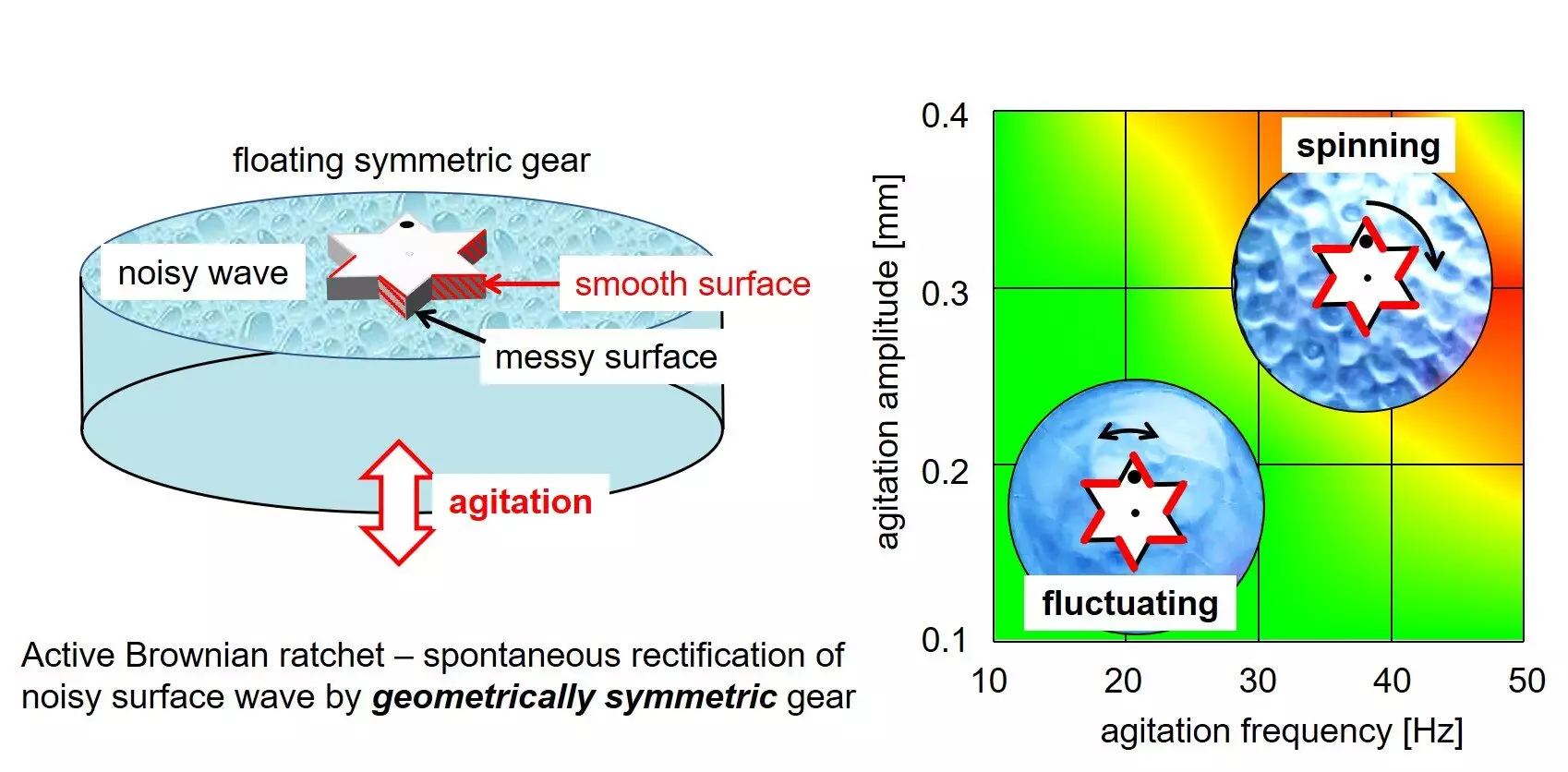The ratchet mechanism is a crucial component of mechanical systems that converts disorderly motion into orderly movement through a process known as spontaneous rectification. In biological systems, the concept of a Brownian ratchet has been proposed to explain the mechanism of molecular motors, where chemical reactions rectify random thermal motion of molecules.
A team of researchers from the Department of Chemical Engineering and Materials Science at Doshisha University recently made a significant breakthrough in ratchet mechanism development. Led by Ph.D. student Miku Hatatani, along with Associate Professor Yamamoto Daigo and Professor Akihisa Shioi, they developed a novel ratchet mechanism based on the asymmetry of surface wettability using a geometrically symmetric gear.
The innovative ratchet mechanism developed by the team involved a geometrically symmetric star-shaped gear made of acrylonitrile butadiene styrene (ABS) resin, with six triangular teeth. Parafilm was attached alternatively to the right side of each tooth to create a difference in surface wettability between the two faces of the teeth.
When tested in a water-filled petri dish with the gear facing a vibrating disk that produced random fluctuations in water, the gear with the parafilm demonstrated a one-way spin in the waterbed within a restricted range of frequency and amplitude. On the other hand, the gear without the parafilm did not exhibit a one-way spin at any frequency or amplitude. The researchers also noted that the gear displayed fluctuations in both directions at shorter timescales but demonstrated a one-way spin at longer timescales.
Upon investigating the mechanism of the innovative ratchet motor, the researchers found that its unique motion was generated by a stochastic process with a biased driving force. This biased driving force stemmed from the difference in interactions of water waves, or surface wettability, between the smooth parafilm face and the relatively rough non-parafilm face of the gear teeth.
The study conducted by Hatatani and the team holds significant potential for future developments in ratchet mechanisms. The researchers believe that their system, which utilizes surface-energy profiles for the ratchet mechanism, may provide a breakthrough in generating new ratchet motor designs. By considering the asymmetric potential with cyclic variation that molecular ratchets operate on, their system offers a promising avenue for innovation in this field.
The development of a novel ratchet mechanism based on surface wettability represents a significant advancement in the understanding and application of ratchet systems. The work conducted by the team at Doshisha University sheds light on the potential of utilizing surface properties to create efficient and effective ratchet mechanisms, with implications for various fields, including energy-harvesting technologies and biological systems.


Leave a Reply